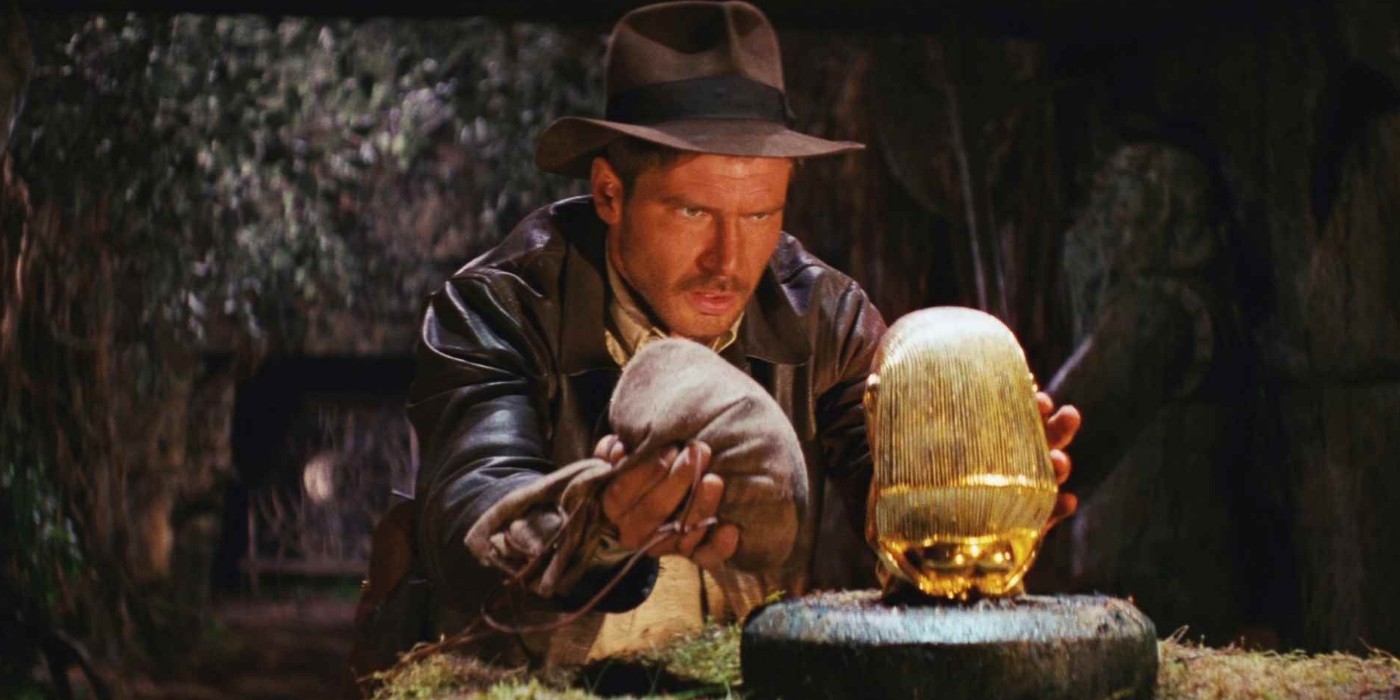If all those people who brag about never having seen Star Wars are telling the truth, and if it’s any indication that no one really seems to remember whether or not they’ve seen the third Back to the Future movie (they have), I’d say the original Indiana Jones trilogy might be the most widely seen movie series of all time. For those of us who grew up with them, we accepted Harrison Ford’s star turn as an archaeology professor named after a dog named after a United State who’s really good at using a whip without a second thought. But I’m an adult now and I have a second thought: What the fuck?
The way I remembered the series—which I saw dozens of times as a kid, but probably haven’t revisited in ten years or so—was as a pair of straightforward, family-friendly adventure movies speculating revisionist histories of pre-WWII Nazi Germany’s fixation with religious artifacts; also, some nightmare B-movie about white people getting their hearts ripped out by savages. I guess I was right about the basic premise of the first and third installments, though my memory must have repressed the sporadic Savinian body horror that led up to each movie’s gruesome climax (Raiders made quick turnaround of Scanners’ exploding head, which premiered six months previously). As for Temple of Doom, well, I’ve since become familiar with the term “white savior complex.”
A pretty cool thing about Raiders is that most of the movie is just Harrison Ford punching Nazis (which reminds me: please take advantage of Netflix’s obsessive data collection and rewind ten seconds every time a Nazi gets socked) with the fist-to-face combat sound effects exaggerated to comedic effect. After two hours of this, these same Nazis melt and explode because they made God really mad—also sick. I guess the biggest mystery behind the whole series is why this precise winning format wasn’t duplicated for the bizarro kinda-nuclear-family comedy of episode two, which, halfway through, abruptly takes a turn from mock horror at the expense of Indian culture and Hindu religion to actual horrors that will forever be imprinted on our impressionable minds.
The Last Crusade, the best Indiana Jones movie, provided a bit of context for the trilogy with a brief backstory for the title character (the named-after-a-dog thing, the despising capitalists thing, the, uh, finding out about whips thing) and tied the trilogy together with an adorable father/son reunion in which so many jokes were made about them having sex with the same Nazi. For some reason, Indiana’s dad is Sean Connery (who’s funny??), and for obvious reasons, the movie revisits a finale where Nazis get melted (this time after briefly transforming into Christopher Lloyd)—and in a regrettably sympathetic compromise: cast into a geomorphic abyss—for being greedy and terrible.
With all this in mind, it actually wasn’t that weird when they rebooted the series in 2008 for Kingdom of the Crystal Skull, another Indiana Jones movie where Ford plays a father figure (albeit more hesitant/biological) and Nazis don’t get punched. Kicking off Harrison Ford’s junket of reboots he seems kind of pissed to be involved with—and introducing Shia LaBeouf (Disturbia, Dumb and Dumberer) as a sort of Wally Brando figure reuniting with his parents—the X-File premise was really just an excuse for Cate Blanchett to disappear into her Soviet accent and bob cut, and for the CGI team to show off all the cool things they could do with ants.
Times were different in the ’80s, obviously—all of the highest grossing films of the decade were still based on bizarre original screenplays rather than replicating or continuing older ones. In fact, Raiders of the Lost Ark wasn’t even the weirdest ubiquitous movie of the decade, a denomination that goes without question to a thing called Ghostbusters. By the time Crystal Skull was released, the movies had become an entire franchise, splitting into comic books, novels, and a tedious TV prequel series that severely played down the movies’ supernatural themes with a rotating cast of knock-off River Phoenixes as the young Indiana. With a new installment soon to be a thing we talk about briefly, just keep in mind than Indiana Jones was never not extremely weird.
All four movies are available now on Netflix (and are presumably responsible for upping the service’s streaming price) until the platform suddenly decides to take them down.









